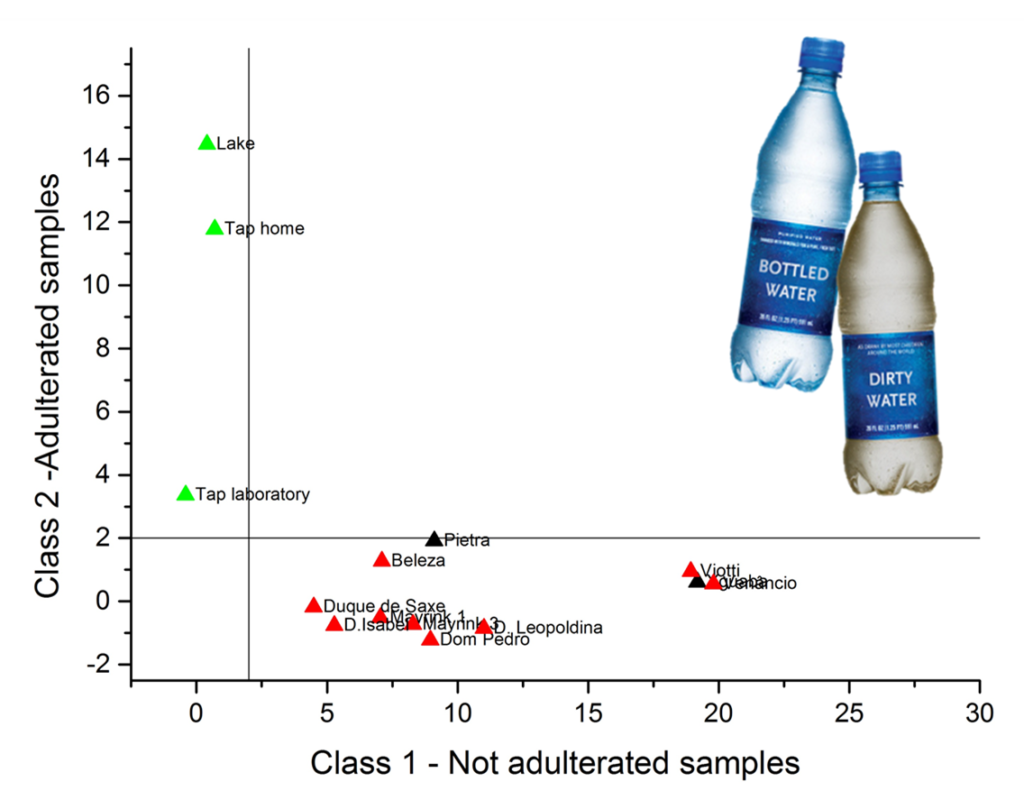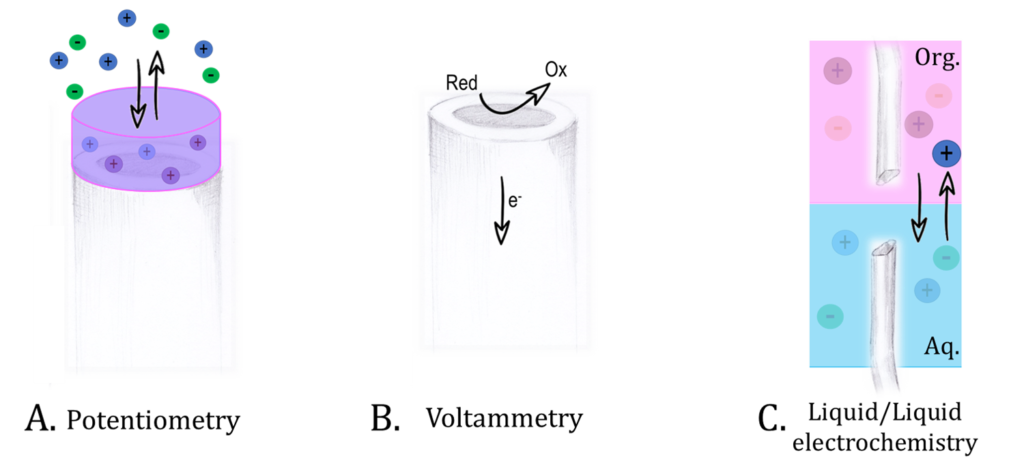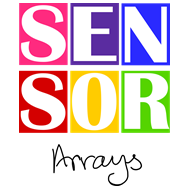Electronic tongues = sensor arrays + AI
Traditional electronic tongues proposed in the 1990’ are to some extent bioinspired. Non-specific receptors in the tongue are replaced with chemical sensors, and the generated signal is analyzed not by the brain but by a machine learning algorithm. After training the algorithm with a sufficient number of samples (a few dozen to a few hundred), an unknown sample can be tested and assigned to some group (e.g., healthy or cancer patients) through classification or attributed with a certain value through multivariate regression.

Electronic tongues have truly amazing capabilities, that we explore in our systems:
- they can elucidate information that cannot be easily obtained with a single sensor, like taste of foodproducts or presence of contamination


- account for very complex and variable background, as in fermentation broths or reduce the impact of interfering species


Simple systems: paper-based devices, low-cost setups
In our analitycal systems we take advantage of non-convential materials, such as paper, making use of their properties -wicking without use of pumps, ability to serve as reservoir for solutions, to pre-concentrate the desired analyte through repetitive soaking and drying or use of enhanced surface area.
With fast fabrication and minimal cost it is easier to think outside the box and solve problems. Low-cost systems also permit to develop new ideas even if the resources are scarce, and allows them to spread more easily as more researchers and users are able to apply them.



Ion-transfer voltammetry
In voltammetry, the registered current is the measure of charge passed through the electrode/electrolyte interface (Fig.B). Similarly, in ion-transfer voltammetry, the current represents charges passing between the aqueous and organic phases, but in this case, the charge does not come from electrons but ions traveling through or adsorbing at the interface (Fig.C). In contrast to potentiometric sensors (Fig. A) configuration of the setup allows for a voltage sweep to be applied, therefore signals from different species can be recorded during one measurement.

The technique is very powerful as it allow to electrochemically sense species that are not electroactive just charged, opening the possibility to sense species such as proteins directly, in a label-free manner.
Bioanalysis
We want to solve real life problems that is why we work with biologists and neurobiologists to make use of our systems. At the Institute of Physical Chemistry PAS we perform routine cell cultures with immortalized cell lines (HeLa and HepG2), in which we test our sensors. We also can lend a hand in data analysis having experience in Machine Learning models applied to data from behavioural studies and mass spectrometry.



